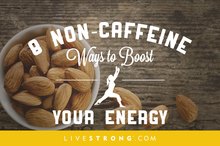10 Bad Habits to Ditch for a Happier You
You know the drill: Brush your teeth, eat your veggies, exercise and be nice to people. Yet, as hard as we try, some bad habits somehow manage to sneak their way into our lives at times, often without our awareness. By letting go of the following bad practices, you’ll free up time, energy, mental space and even money that could be better spent on happier, healthier pursuits. Consider this your bad-habit spring cleaning.
1. Holding a Grudge
Being unable to forgive can lead to stress and may end up affecting you physically as well as psychologically. A study published in Social Psychology and Personality Science, for example, shows that the very act of forgiveness can help lift weight off your shoulders. People who were offended by someone but ultimately forgave them estimated the steepness of a hill as lower than people who still harbored resentment toward another person. The more forgiving people were able to jump higher as a result. “Forgiveness does not mean you’re condoning, forgetting or denying the event or the pain it caused,” says Elizabeth Lombardo, Ph.D., psychologist and author of “Better Than Perfect: 7 Strategies to Crush Your Inner Critic and Create a Life You Love.” “Take responsibility for what you can do now instead of focusing on the regret that happened in the past.”
Listen now: How to Be a Badass Lady Boss
2. Unwinding With a Glass of Wine or a Beer Every Night
How to Fall into a Deep Sleep
Learn More
Sure, a glass of wine at the end of a busy day may be relaxing, but it’s only temporary, says Allen Towfigh, M.D., a board-certified sleep-medicine doctor and neurologist affiliated with Weill Cornell Medical Center/NewYork Presbyterian Hospital in New York City. You may already know this if you’ve found yourself wide awake at 2 a.m. after falling asleep quickly. “Once the relaxing effect wears off your body metabolizes the alcohol, and this creates a rebound effect that causes you to wake up prematurely,” says Towfigh. The sleep disruption also contributes to fatigue the next day. Towfigh recommends abstaining from drinking three to four hours prior to bedtime for a good night’s sleep. Instead of pouring yourself a glass, try going for an evening walk or bike ride to unwind.
Read more: 16 Foods Dieticians Won't Touch
3. Being Connected 24/7
Just one last email before you hit the hay. Oh, and a final check on Facebook. Do this and you may find yourself staring at the ceiling and unable to sleep. The culprit: The bright blue light from your phone or tablet, which reduces sleep drive and stimulates your brain to stay awake by suppressing melatonin, a hormone necessary to trigger drowsiness, says Towfigh. Turn off all electronics an hour or so before bedtime for more restful sleep. Still having troubling shutting down? Towfigh recommends using a sleep machine or an iPhone app like Relax Melodies to help you nod off.
Read more: 8 Life Lessons You Can Learn From Extroverts
4. Popping Over-the-Counter Pain Relievers Like Candy
The Negative Effects Electronics Have on Teens
Learn More
Too many pain relievers can hurt you, even if they’re nonprescription. In fact, using Tylenol for pain quadruples the risk of an abnormal liver-function test, according to a study published in the British Medical Journal. Plus, you may not only be damaging your liver. The relief you feel might be all in your head, according to the same research, which found OTC pain relievers works no better than a placebo for knee and hip pain. “If your aches are due to muscular tension, massages are a good way to help reduce muscular tension and spasm in difficult-to-reach areas,” says Navid Farahmand, M.D., board-certified interventional pain-management physician at the Brain and Spine Institute of California in Newport Beach. “For easier-to-reach muscle groups, such as our hamstrings and calves, use of a foam roller or tennis ball may be just as effective as stretching and relaxing the muscles.”
5. Procrastination
Procrastination not only gets you in trouble in your professional and personal life, but waiting until the last minute to do things also hurts your heart, a new study shows. A non-procrastinator feels that he is in control -- that he can ‘do it,’” says Robert Greenfield, M.D., medical director of noninvasive cardiology and cardiac rehab at MemorialCare Heart & Vascular Institute at Orange Coast Memorial Medical Center in Fountain Valley, California. “Once someone loses the feeling that they’re in control of their lives, stress hormones are produced. Acutely it is adrenaline; chronically it is cortisol. Both of these hormones raise blood pressure.” Many procrastinators put things off because they feel overwhelmed by their situation and don’t feel in control. Resolve it by setting priorities and organizing you life to be responsible while still enjoying it as well, adds Greenfield.
6. Drinking Diet Soda to Save Calories
Saving calories by swapping regular soda for diet pop sounds like a good idea, but research shows drinking diet soda is linked to weight gain. “Diet sodas do not contain calories, so in themselves do not cause weight gain,” says Amy Goodson, M.S., RD, sports dietitian for the Dallas Cowboys. “However, when people crave sugar and try to fill that craving with a diet soda made with an artificial sweetener, it does not work. Thus the craving for sugar remains.” You may end up reaching for a “real” source of sugar, such as candy, sweets or a dessert. Nonetheless, real soda and diet soda both contain no vitamins, minerals, fiber or protein, says Goodson. “To kick your habit of guzzling the diet drinks, try flavored water or adding fruit to water for a natural kick.”
Read more: 16 Snacks That Are OK to Eat at Night
7. Being Too Serious All the Time
Lighten up and you’ll boost your health in several ways. A study out of California’s Loma Linda University showed laughter even helped improve memory in older adults in their 60s and 70s. Researchers believe laughter works by reducing the stress hormone cortisol, which can impair memory and learning. “Laughter also helps decrease blood pressure, boost circulation, increase endorphins and otherwise make you healthier,” says Elizabeth Lombardo, Ph.D., psychologist and author of “Better Than Perfect: 7 Strategies to Crush Your Inner Critic and Create a Life You Love.” Take laugh breaks by watching silly cat videos and spending time with people who crack you up, she suggests.
Read more: The effect of humor on short-term memory in older adults
8. Always Imagining the Worst
Are you all doom and gloom? You may not live as long as your more optimistic peers, studies show. People who see the glass as half full live longer and have less depression and greater resistance to the common cold, among other health benefits, according to the Mayo Clinic. “There is nothing wrong with thinking about the worst-case scenario and then taking steps to avoid or plan for it just in case,” says Lombardo. “But many people emotionally react as if their fear is imminent. I call this ‘putting your winter coat on in summer.’ Even if you know you will need a parka in January, wearing it starting in July makes no sense.” What can you do? Remind yourself it hasn’t happened yet, and take steps to either prevent it from happening or, what’s better, deal with it if it does happen.
Read more: 8 Easy Mindful-Meditation Techniques
9. An Easy-Peasy Exercise Routine
If you’re able to read a novel or type emails while you’re on the treadmill or elliptical trainer, you’re probably not working out hard enough. A new study out of Australia shows that people who exercised vigorously for more than 30 percent of their workouts avoided early cardiac death. Exercises like jogging, aerobics or competitive tennis are helpful in achieving these longevity goals, says Nicole Weinberg, M.D., cardiologist at Providence Saint John’s Health Center in Santa Monica, California. "There may also be benefits from interval training or short bursts of increased activity especially in [people] who may find it difficult to maintain a high level of activity for a complete workout." The increased heart rate seen with this higher level of activity is similar to those used in stress tests and likely account for the benefits, says Weinberg.
Read more: Study in JAMA Internal Medicine
10. Being Proud of Getting by on Four Hours of Sleep a Night
Not getting enough sleep is linked to many health issues, including increased risk of heart disease, high blood pressure, stroke, diabetes and a host of other problems. In addition, sleep deprivation can cause weight gain. Sleep affects the appetite-regulating hormones leptin and ghrelin, says Allen Towfigh, M.D., board-certified sleep-medicine doctor and neurologist. “Ghrelin stimulates feelings of hunger, and its levels increase when you’re sleep deprived. At the same time, lack of sleep suppresses leptin, a hormone released by fat cells that signals our bodies to stop eating.” The result: weight gain. Towfigh recommends changing the time you get to bed instead of trying to prolong sleep in the morning. “If you still feel tired in the mornings, incrementally push up your bedtime by 15 to 30 minutes,” he suggests.
Read more: 5 Simple Steps to Living a Healthy Life
What Do YOU Think?
Did we leave anything off the list? How many of these bad habits apply to you? Do you have any advice for ditching your bad habits? Tell us in the comments below!
Read more: 7 Ayurvedic Practices That Seem Strange but Really Work
Related Articles
- http://nymag.com/scienceofus/2015/03/procrastination-is-not-great-for-your-heart.html
- Jason Enterline/iStock/Getty Images









